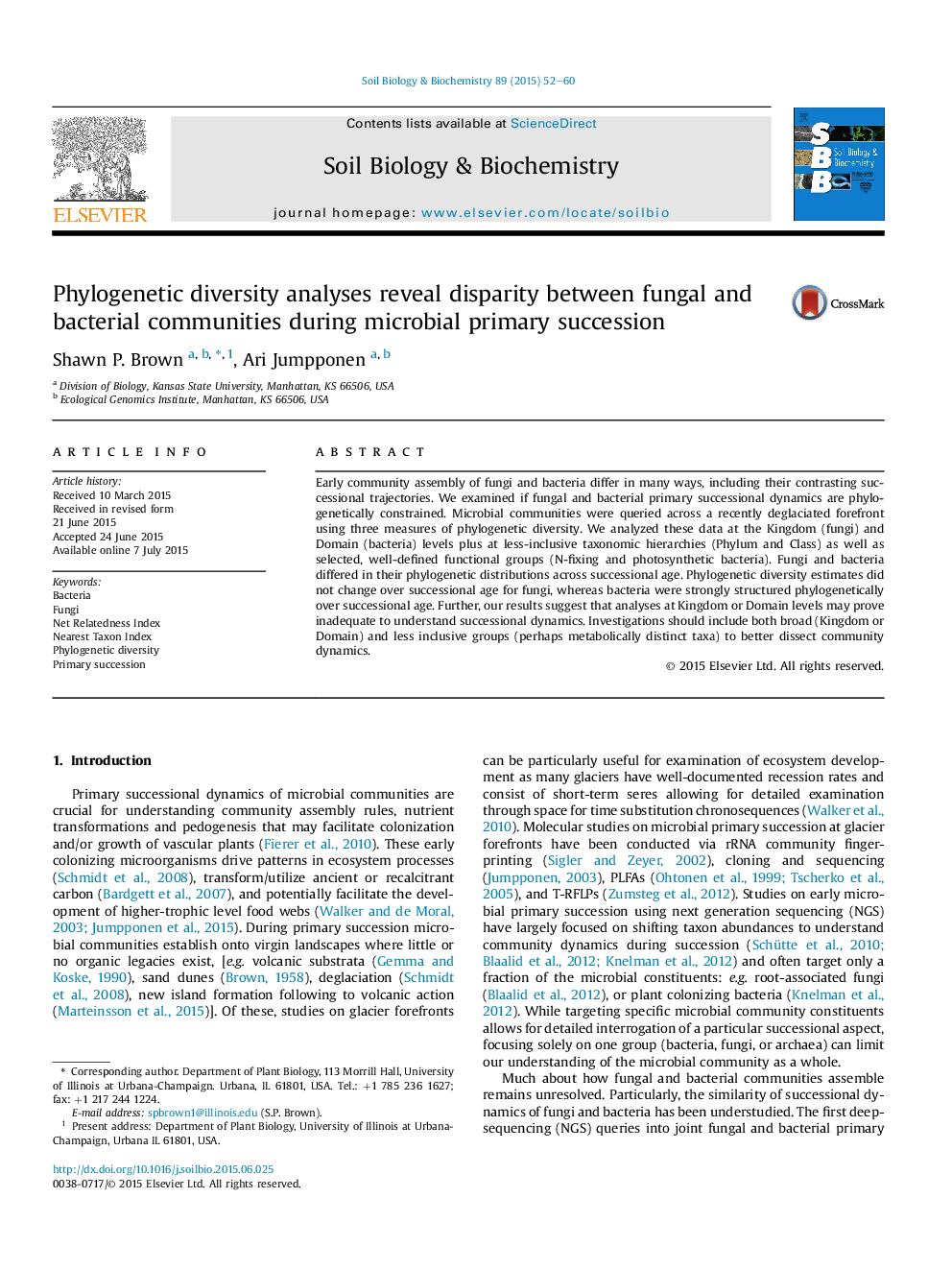| Article ID | Journal | Published Year | Pages | File Type |
|---|---|---|---|---|
| 2024454 | Soil Biology and Biochemistry | 2015 | 9 Pages |
•Fungi and bacteria differ in phylogenetic diversity patterns with succession.•Bacteria shift phylogenetically during succession whereas fungi remain stable.•Phylogenetic diversity analyses on lower taxonomic ranks give higher resolution.
Early community assembly of fungi and bacteria differ in many ways, including their contrasting successional trajectories. We examined if fungal and bacterial primary successional dynamics are phylogenetically constrained. Microbial communities were queried across a recently deglaciated forefront using three measures of phylogenetic diversity. We analyzed these data at the Kingdom (fungi) and Domain (bacteria) levels plus at less-inclusive taxonomic hierarchies (Phylum and Class) as well as selected, well-defined functional groups (N-fixing and photosynthetic bacteria). Fungi and bacteria differed in their phylogenetic distributions across successional age. Phylogenetic diversity estimates did not change over successional age for fungi, whereas bacteria were strongly structured phylogenetically over successional age. Further, our results suggest that analyses at Kingdom or Domain levels may prove inadequate to understand successional dynamics. Investigations should include both broad (Kingdom or Domain) and less inclusive groups (perhaps metabolically distinct taxa) to better dissect community dynamics.
